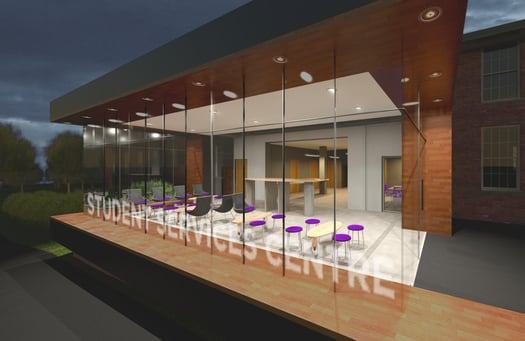FYI
 There are so many acronyms that fill our lives today it’s easy to get overloaded with too much technical jargon, so much so that your mind is well and truly “boggled”. Just when you thought you’d escaped the overload one more just creeps through in the form of BIM.
There are so many acronyms that fill our lives today it’s easy to get overloaded with too much technical jargon, so much so that your mind is well and truly “boggled”. Just when you thought you’d escaped the overload one more just creeps through in the form of BIM.
BIM, or for the new kids in the class, Building Information Modelling, is a really hot topic in design and construction at present. Its existence is spreading waves throughout the industry and is a widely debated topic professionals, sales teams and now the Government, who are mandating BIM by 2016.
There is an abundance of hype and excitement surrounding the technology but amidst all the publicity does anyone really know what BIM is?
Can anyone honestly answer the question of; What does the system mean to industry professionals as the user and more importantly do clients know that it exists and how it will benefit them?
As with any change and in particular new technology, for something to change our lives for the better (as the design of the product intends) we need to embrace it with a positive open mind and willingness to learn.
The naysayers of the world will never be able accept anything that changes their status quo. So if that applies to you, take a deep breath, open your mind and try to positively take on board BIM benefits.
to positively take on board BIM benefits.
Let’s take a digestible look at Building Information Modelling (aka) BIM.
If you have no knowledge of BIM whatsoever you may have the assumption that BIM is a software package that architects use to produce their drawings. This is what the software manufacturer's would have us all believe. The reality is that it’s a little more complicated than just a piece of software. Yes software can support BIM processes, but BIM is not software!
Over the years there have been many definitions and explanations as to what BIM actually is, and when a definition has been agreed upon and published the parameters have changed. As we now know BIM is an acronym for Building Information Modelling (this definition is debated too).
BIM is a process, a system of work. The professionals involved with a project will all use one common coherent system to work on a building design. Information is shared virtually between the design team, and they all have access to the same information on the same system. Information will be shared between;
-
Architects
-
Landscape Architects
-
Quantity Surveyors
-
Civil and Structural Engineers
-
Building services Engineers
-
Main Contractors and Specialist Sub Contractors
How does BIM work?
There are no bounds to how far BIM can be applied, it covers more than just the Architects design. It reaches out throughout the design team encompassing all of the information required throughout the design and build process, from geographical information to the materials and quantities for the build.
BIM cannot be done in isolation, as it is about project processes and information that involves all people party to a project. Each professional wil work with their discipline specific data within an established shared system, commonly supported by software technology.
In clearly defining the processes and sharing the information commonly, a reduction in information loss and an improvement in speed and quality of data interchange occurs.It is now possible for project information to be accessed by the project team at any given time with in a quality controlled environment.
What information range can BIM cover?

Theoretically all project information ought to be covered by a BIM process. However it is acknowledged that not all information is relevant to all persons.The client ought not be handed over 'a BIM model' at the end of a project.
This is technically possible yet certainly not what a client would want. Building users will need to have easy access to the building operation information, and not the minutia of design and building information.Information part of a BIM process includes.
-
2D & 3D information
-
Briefing information
-
Contracts, agreements and insurances
-
Drawings
-
Planning applications
-
Environmental assessments etc.
-
Specifications and product information
-
Correspondence
-
Risk Management
-
Maintenance schedules
-
Post occupancy audits
You will see from the above list of information that there is no one piece of software that will produce all of the information. Systems and processes therefore need to be put in place to control the project accross a range of data production and handling. This is the implementation of a BIM process.
BIM means that projects benefit from a truly integrated design process, reducing project risks and therefore improving its success.
It will transform the way in which architects and the whole project team work together, improving the framework and transfer of information to build and complete projects successfully, on time and to budget. It could be said that BIM is a driving force to streamline co-operation, teamwork and better information management for the construction industry. This can only mean one thing; a better service for clients.
How does BIM benefit the client?
There are a multitude of benefits for the professionals using BIM but what does this actually mean for clients?
Do clients actually notice the difference with a BIM led project or is it an in house benefit where professionals now have an excuse to increase their fees?
As the saying goes, “you get what you pay for” or are clients paying to benefit the professionals? Let’s investigate further. BIM can bring benefits to any type of client, irrespective of whether they are a domestic client requiring a house extension or a public sector client with a multi-million pound budget.
BIM offers the clients
1. Improved 3D experience and visualisation
 It’s not just a great tool for any client to see the “end result” for spatial requirements, but there are also practical purposes. A rich 3D visual and digital simulation acts as a rehearsal for the build bringing together all of the project teams detailing.
It’s not just a great tool for any client to see the “end result” for spatial requirements, but there are also practical purposes. A rich 3D visual and digital simulation acts as a rehearsal for the build bringing together all of the project teams detailing.
A model is a way is a great way of combining essential details, eliminating any potential problems, reducing amendments, conflict, waste and potential delay. It can also help clients to make well informed decisions with clear information.
For example,
Visual prototypes can establish if maintenance access could potentially be a problem when completed, saving the client time and money.
The 3D visual simulation of phased construction and finally the finished scheme could mean that the project is delivered ahead of schedule, again saving money.Precise design modelling means that materials can be made to measure off-site so that they fit first time, and fit properly resulting in a better building.
2. Improved professional productivity
 A BIM process can provide your design team with the ability to upload and coordinate information with ease, that is timely, accessible and facilitating deadlines to ensure that the design progresses as planned.A simulation and plan of the programme of works will identify the most efficient construction systems and organisation of key elements such as access, waste and machinery.
A BIM process can provide your design team with the ability to upload and coordinate information with ease, that is timely, accessible and facilitating deadlines to ensure that the design progresses as planned.A simulation and plan of the programme of works will identify the most efficient construction systems and organisation of key elements such as access, waste and machinery.
BIM improves the clarity of communication and collaboration between the project team reducing risk and ultimately providing better efficiency of the project as a whole, and the building operation.We all like to think that we are getting a good deal for our money, and we try to make it go as far as possible.
BIM is a process that will help your project budget to go further.
To summarise, a BIM led project is not just an in house process to help improve business efficiency. You will certainly benefit from using an Architect and project team that implement BIM as a process for design, construction and operational use of a building.
If you have any questions and what it can do, why not leave a comment below or get in touch with us and we'll be happy to help.

